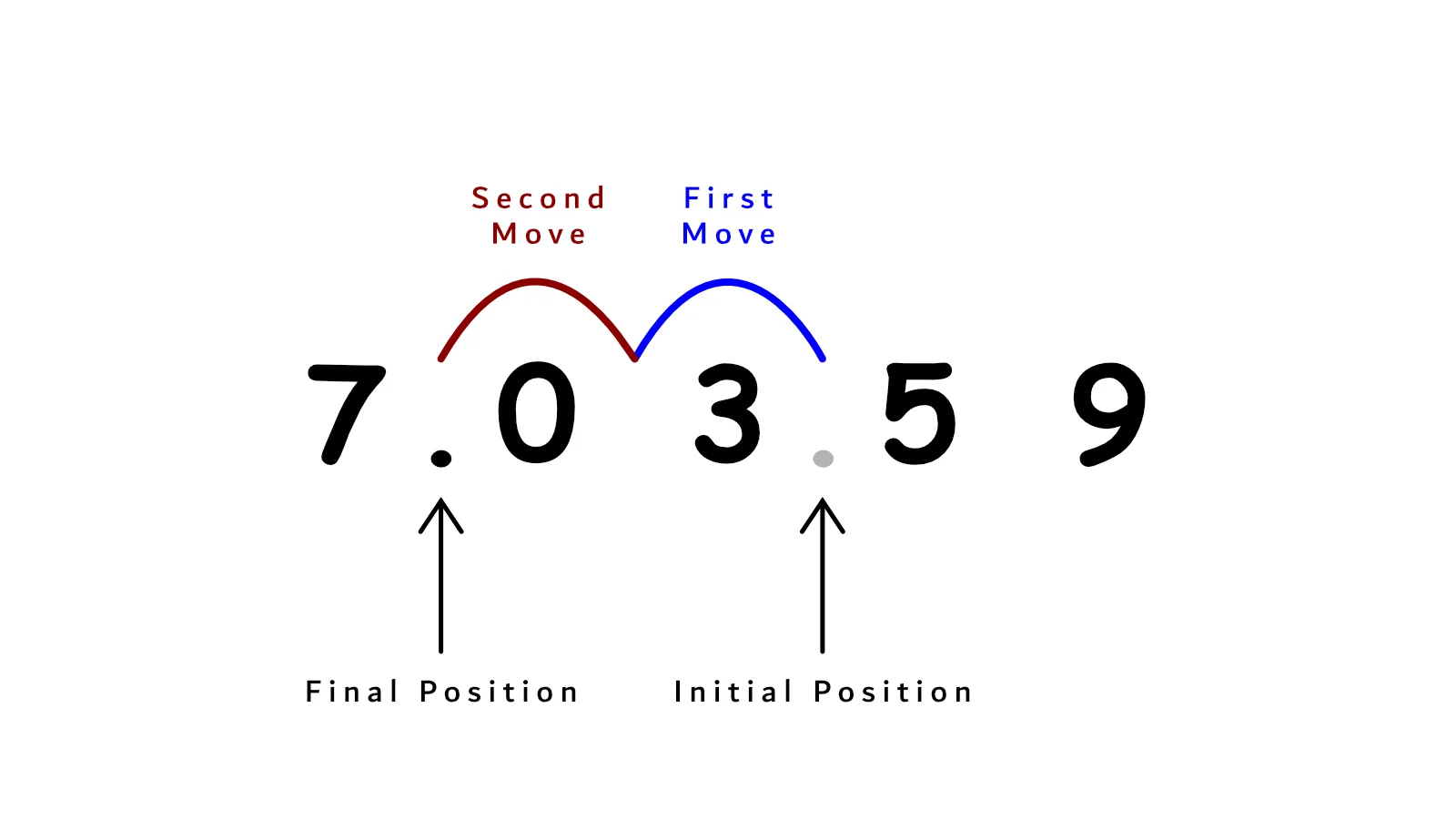toExponential() Method – How to Convert Numbers to Exponential Notations
toExponential() converts a number to its exponential equivalent (Scientific Notation).
In other words, whenever you use toExponential() on a number, the method does the following:
- It places a decimal point after the first digit of the specified number.
- It uses an exponential notation to express how many places it moved the decimal point.
For instance, consider the following number:
703.59
7.0359e+2 is the exponential equivalent of the number above because we moved the decimal point twice from its initial position to its final place.

An e+2 exponential notation means the number's decimal point moved two places to the left.
- The exponential notation (
e+2) in7.0359e+2means exponent10to the power2(102). In other words,7.0359e+2is equivalent to7.0359 x 102. toExponential()is sometimes written asNumber.prototype.toExponential()because it is a method of theNumberobject'sprototypeproperty.
Syntax of the toExponential() Method
toExponential() accepts only one optional argument. Here is the syntax:
number.toExponential(totalFractionDigits);
The totalFractionDigits argument specifies the number of digits browsers should show after the decimal point. If omitted, browsers will use as many digits as necessary to represent the number.
toExponential()returns a string value.toExponential()does not change the original number.- Browsers round the returned value if necessary.
Examples of the toExponential() Method
Below are examples of the toExponential() method.
Convert 703.59 to an exponential notation
const number = 703.59;
number.toExponential();
// The invocation above will return: 7.0359e+2
Convert 7.0359 to an exponential notation
const number = 7.0359;
number.toExponential();
// The invocation above will return: 7.0359e+0
Convert 0.70359 to an exponential notation
const number = 0.70359;
number.toExponential();
// The invocation above will return: 7.0359e-1
Create NPM Package like a pro
Convert 0.000070359 to an exponential notation
const number = 0.000070359;
number.toExponential();
// The invocation above will return: 7.0359e-5
Convert 703.59 to an exponential notation with no decimal digits
const number = 703.59;
number.toExponential(0);
// The invocation above will return: 7e+2
Convert 703.59 to an exponential notation with only one decimal digit
const number = 703.59;
number.toExponential(1);
// The invocation above will return: 7.0e+2
Convert 703.59 to an exponential notation with three decimal digits
const number = 703.59;
number.toExponential(3);
// The invocation above will return: 7.036e+2
Convert 703.59 to an exponential notation with seven decimal digits
const number = 703.59;
number.toExponential(7);
// The invocation above will return: 7.0359000e+2
Overview
This article discussed what toExponential() is. We also used examples to see how it works.
Your support matters: Buy me a coffee to support CodeSweetly's mission of simplifying coding concepts.
Join CodeSweetly Newsletter